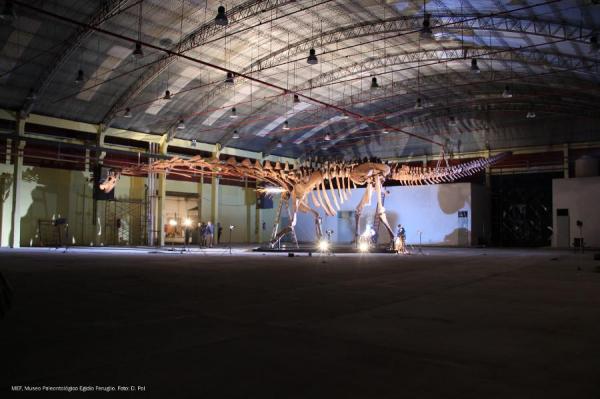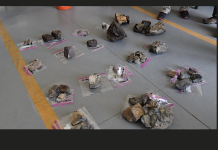Aug. 10 (UPI) — Paleontologists have unearthed a new species of titanosaur in Argentina’s Patagonia. Researchers believe it is the largest dinosaur species ever discovered.
Titanosaurs are a diverse group of plant-eating sauropods. The group’s newest member is Patagotitan mayorum. Its name is an homage to the dino’s origins and size — “mayorum” is the Greek word for titan.
Scientists first discovered the dinosaur remains in 2012. Since then, the excavation team has recovered dozens of fossilized bones representing six distinct specimens.
The newly discovered species lived roughly 100 million years ago and grew to be 20 feet tall at the shoulder. Patagotitan mayorum stretched a whopping 122 feet in length. A full-grown adult likely weighed between 70 and 77 tons.
“Estimating the body weight of an extinct animal is a challenging task,” Diego Pol, scientists at the Egidio Feruglio palaeontology museum in Argentina, said in a news release. “We only have left the bones and from these remains we have to infer the body weight through the use of indirect methods.”
Titanosaurs feature a wide spectrum of body sizes, but the largest species have all been found in Patagonia, which suggests the region featured a unique combination of vegetation and climate conducive to the evolution of large bodies.
Researchers say the new species would have dwarfed more fearsome predators, like Tyrannosaurus rex. But the herbivore was likely slow and docile.
Scientists found the new species’ bones among three different layers of sediment, suggesting the dinosaurs frequented the floodplain where they became buried and preserved.
“In one of the levels there is a femur that, clearly, had been stepped on by another animal,” said researcher Jose Luis. “At present, this is something common in places where elephants come back frequently, for example; it is very normal that they step on another elephant that was dead before.”
Researchers described their latest discovery in the journal Proceeding of the Royal Society B.







